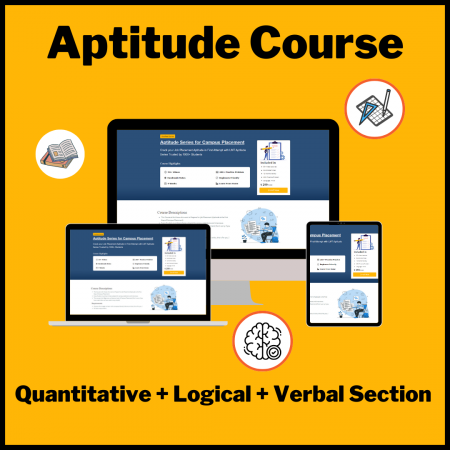Kinematics of Machines
Free

-
Index
- Maximum Power Transmission
- Length Of Open Belt Drive
- Effects of Power Transmission if Conditions are Changed
- Velocity Ratio Of Belt Drive
- Numerical On Speed Loss In Belt Drive Due To Creep
- Numerical On Maximum Power Transmission
- Maximum Power Transmission
- Gear numerical [part 2]
- Gear Numerical [part 3]
- Break Numerical [part 1]
- Laws of Gearing
Kinematics of Machines
Kinematics of Machines is To acquaint with basic concept of kinematics and kinetics of machine elements. To familiarise with various basic mechanisms and inversions. To study basics of power transmission.
Outcomes for the subject Kinematics of Machinery Learner will be able to… Define various components of mechanisms. Develop mechanisms to provide specific motion. Draw velocity and acceleration diagrams of various mechanisms. Draw Cam profile for the specific follower motion. Analyse forces in various gears. Select appropriate power transmission for specific application.
Chapter Kinetics of Rigid Bodies consists of the following subtopics Mass M.I. about centroidal axis and about any other axis, Radius of Gyration, D’Alembert’s Principle of bodies under rotational motion about a fixed axis and plane motion, Application of motion of bars, cylinders and spheres only Kinetics of Rigid bodies: Work and Energy Kinetic energy in translating motion, Rotation about fixed axis and in general plane motion, Work Energy Principle and Conservation of energy. Chapter Basic Kinematics consists of the following subtopics Structure, Machine, Mechanism, Kinematic link & its types, Kinematic pairs, Types of constrained motions, Types of Kinematic pairs, Kinematic chains, Types of joints, Degree of freedom (mobility), Kutzbach mobility criterion, Grűbler’s criterion & its limitations Four bar chain and its inversions, Grashoff’s law, Slider crank chain and its inversions, Double slider crank chain and its inversions.
Chapter Special Mechanism consists of the following subtopics Straight line generating mechanisms: Introduction to Exact straight line generating mechanisms – Peaucillier’s and Hart’s Mechanisms, Introduction to Approximate Straight line generating mechanisms- Watt’s,Grasshopper mechanism, Tchebicheff’s mechanisms Offset slider crank mechanisms – Pantograph, Hook-joint (single and double). Steering Gear Mechanism – Ackerman, Davis steering gears.
Chapter Velocity Analysis of Mechanisms (mechanisms up to 6 links) consists of the following subtopics Velocity analysis by instantaneous center of rotation method (Graphical approach), Velocity analysis by relative velocity method (Graphical approach) Analysis extended to find rubbing velocities at joints, mechanical advantage (Graphical approach) Velocity analysis of low degree complexity mechanism (Graphical approach), Auxiliary point method. Chapter Velocity and Acceleration Analysis of Mechanism consists of the following subtopics Velocity and Acceleration- analysis by relative method (mechanism up to 6 link) including pairs involving Coriolis acceleration (Graphical Approach).
Chapter Cam Mechanism consists of the following subtopics Cam and its Classification, Followers and its Classification, Motion analysis and plotting of displacement – time, velocity-time, acceleration-time, jerk-time graphs for uniform velocity, UARM, SHM, and Cycloid motions (combined motions during one stroke excluded), Motion analysis of simple cams – R-R cam, D-R-R and D-R-D-R Cam operating radial translating follower, Pressure angle.
Chapter Belts, Chains and Brakes consists of the following subtopics Belts: Introduction, types and all other fundamentals of belting, Dynamic analysis belt tensions, condition of maximum power transmission Chains: types of chains, chordal action, variation in velocity ratio, length of chain Brakes: Introduction, types and working principles, Introduction to braking of vehicles.
Chapter Gears and Gear Trains consists of the following subtopics Gears- Introduction, types, Law of gearing, Construction of Involute and Cycloid gear tooth profile, Details of gear terminology, involutes and cycloidal tooth profile, Interference in involutes gears, Critical numbers of teeth for interference free motion Methods to control interference in involutes gears, Static force analysis in gears – spur, helical, bevel, worm & worm wheel Gear Trains: Kinematics and dynamic analysis of simple and compound gear trains, reverted gear trains, epi-cycle gear trains with spur or bevel gear combination.
Suggested References books for the subject Kinematics of Machinery by Mumbai University are as follows Theory of Mechanisms and Machines by Amitabh Ghosh and A. Kumar Mallik 2. Theory of Machines and Mechanism by Uicker Jr, Garden Pennock & J.F. Shigley, OXFORD University Press 3. Theory of Machines by P L Ballaney 4. Theory of Machines by S S Ratan 5. Kinematics of Machines by R T Hinckle, Prentice Hall Inc 6. Kinematics by V M Fairs, McGraw Hill 7. Mechanism Design: Analysis and Synthesis Vol I by A. Erdman and G N Sander, Prentice Hall 8. Kinematics and Dynamics of Planer mechanisms by Jeremy Hirsihham, McGraw Hill 9. Theory of Machines by W. G. Green, Bluckie & Sons Ltd.
Prepare For Your Placements: https://lastmomenttuitions.com/courses/placement-preparation/
![]()
/ Youtube Channel: https://www.youtube.com/channel/UCGFNZxMqKLsqWERX_N2f08Q
Follow For Latest Updates, Study Tips & More Content!
Course Features
- Lectures 11
- Quizzes 0
- Duration 50 hours
- Skill level All levels
- Language English
- Students 92
- Certificate No
- Assessments Yes


![SEBI GRADE A – IT 2025 SEBI GRADE A 2025 – IT [ Phase 1 + Phase 2 ]](https://lastmomenttuitions.com/wp-content/uploads/2025/12/SEBI-GRADE-A-IT-2025-450x450.png)
